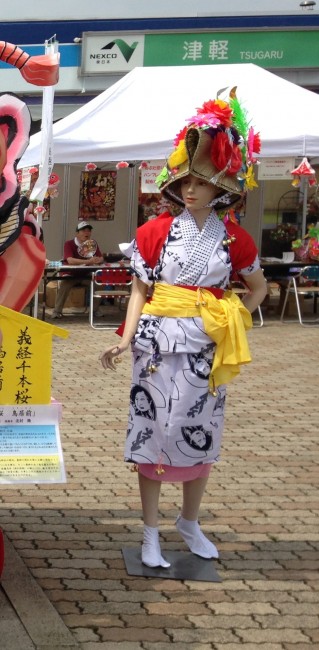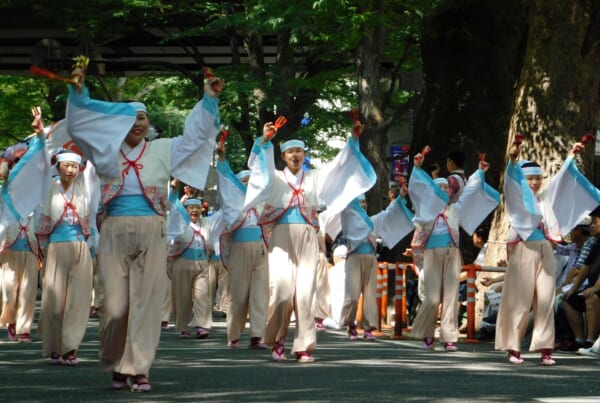I could hear the festival coming down the street, although I could not see a thing yet through the dense crowds lining the street. “Rasera Rasera! Rase Rase Rase Ra!” Thousands of people shouting, the bells on their costumes vibrating in time with their dancing, adding a high-pitched peal to the phrase. The clamor grew louder, and finally, I could see the hyashi, guiding the parade to the rhythm of their taiko drums and flutes.
As it grew closer, I could make out the beautifully colored images decorating the bamboo and washi paper float, depictions of samurai warriors, and animals depicted across the giant globe. The men pushing the yatai cart spun it around, lifting it towards the crowd so the massive samurai head towered above the audience before lowering it and pushing it to the opposite side of the street. They did it effortlessly; it seemed to be floating as they maneuvered it along the crowded road.
This is the Aomori Nebuta Festival, the quintessence of Aomori’s summer. It is renowned as one of Japan’s most popular festivals, drawing in thousands of attendees to view this spectacular show of five-meter-tall theatrical floats known as Nebuta.
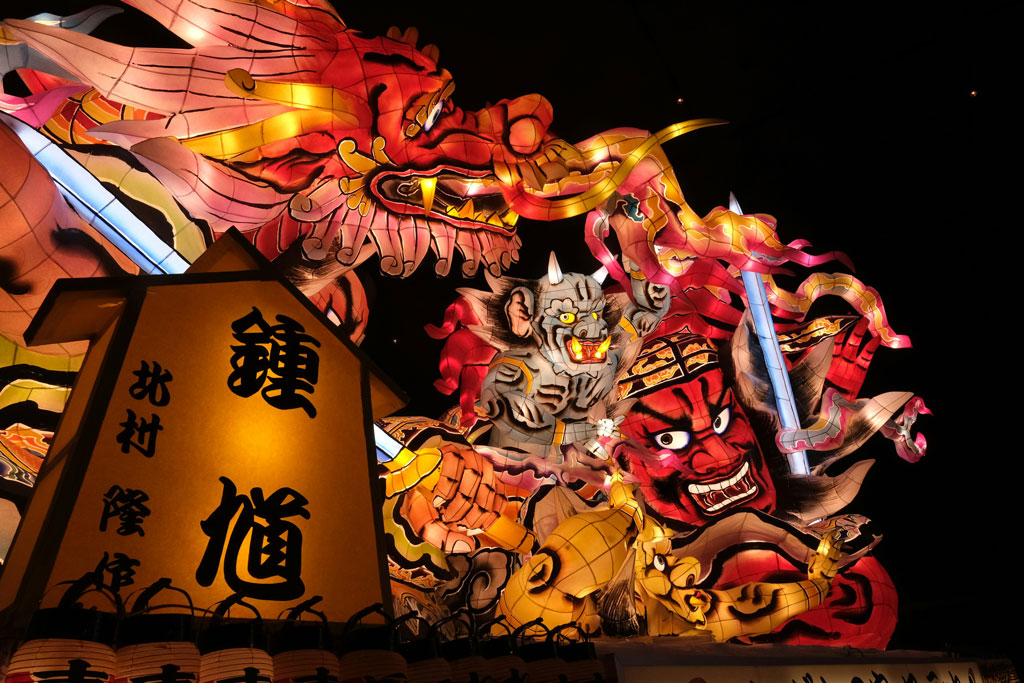
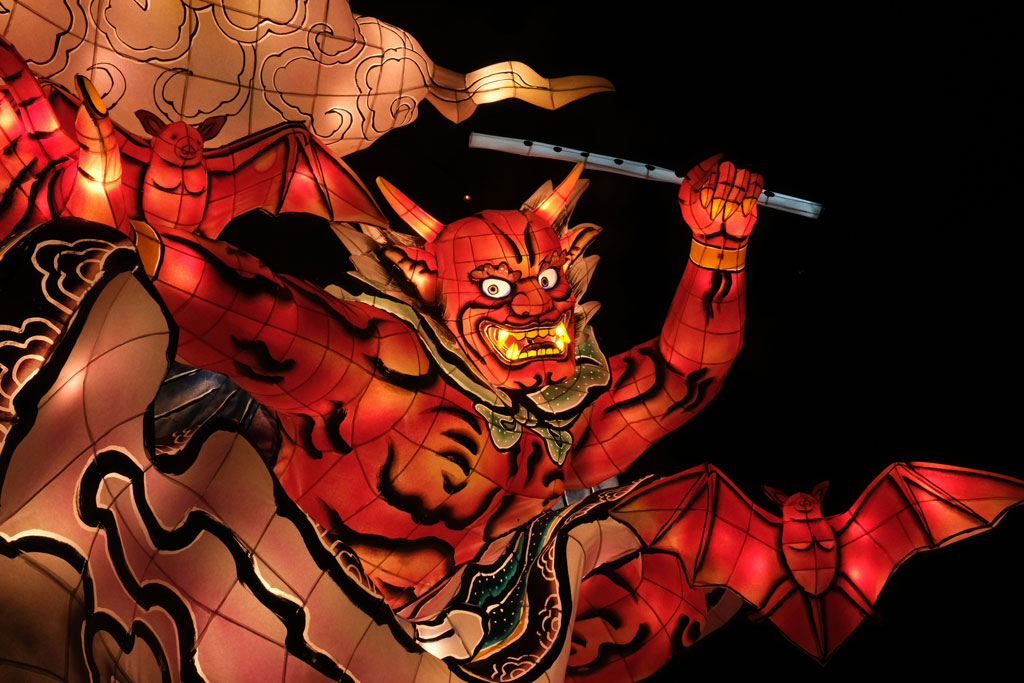
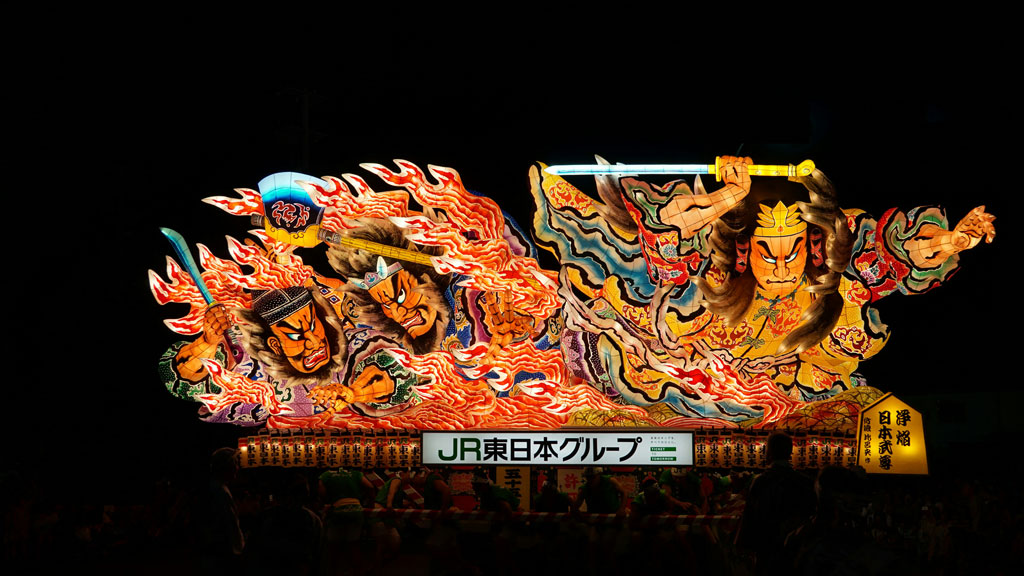
When and Where is the Nebuta Festival?
The Nebuta Matsuri is one of the most popular festivals in Northern Japan and is part of Tohoku’s Sandai Matsuri (Three Great Festivals of Tohoku). It takes place annually around August 2nd through 7th, although the dates can change, in Aomori City. The first two days feature the smaller Nebuta Matsuri floats. Due to the large size of the giant floats, they are only displayed during the last four days of the festival. The floats are typically 15 to 30 feet tall, but their size is limited by power lines and other obstacles. They are adorned with mythical and historical figures and animals and illuminated from within by hundreds of lights.

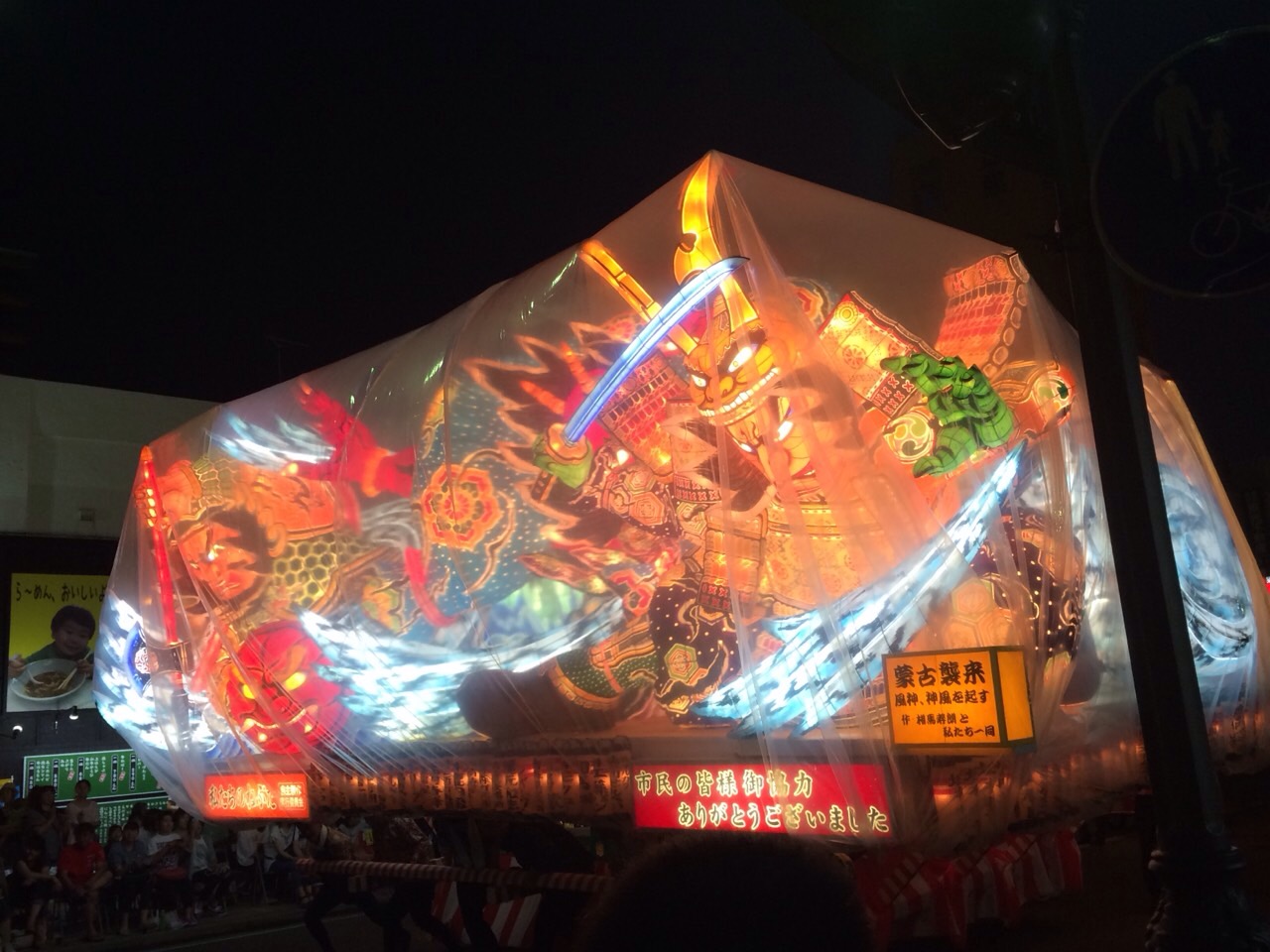
The origin of Nebuta Matsuri is uncertain, although I personally enjoy the idea that it is meant to energize the soul after the sticky summer heat, just in time for the fall harvest season. The festival is infectious in its energy, and participating is the best way to enjoy it.
Following the float came a large parade of dancers, the haneta, dressed in the traditional yukata for Nebuta Matsuri, black and white patterned cloth, with brightly colored sashes strapped over their shoulders to hold up their sleeves. Decorated with bells, the costumes jingled as the haneta hopped up and down. The idea is that each bell that falls from the costume while dancing is meant to represent the shedding of bad luck.
The special thing about Nebuta Matsuri is that anyone can participate with no prior practice or preparation required, unlike some other summer festivals in the Tohoku region. You just need to put on the appropriate clothes and join a group. Then you can chant and hop along with the other festival participants, first on one foot and then on the other.
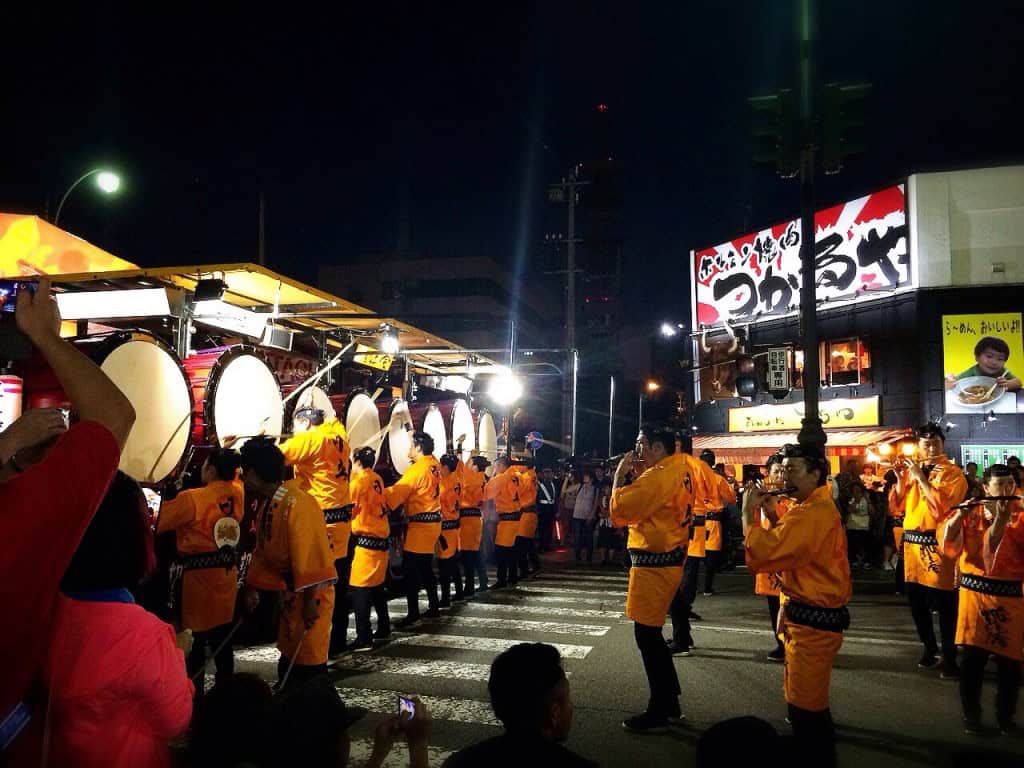
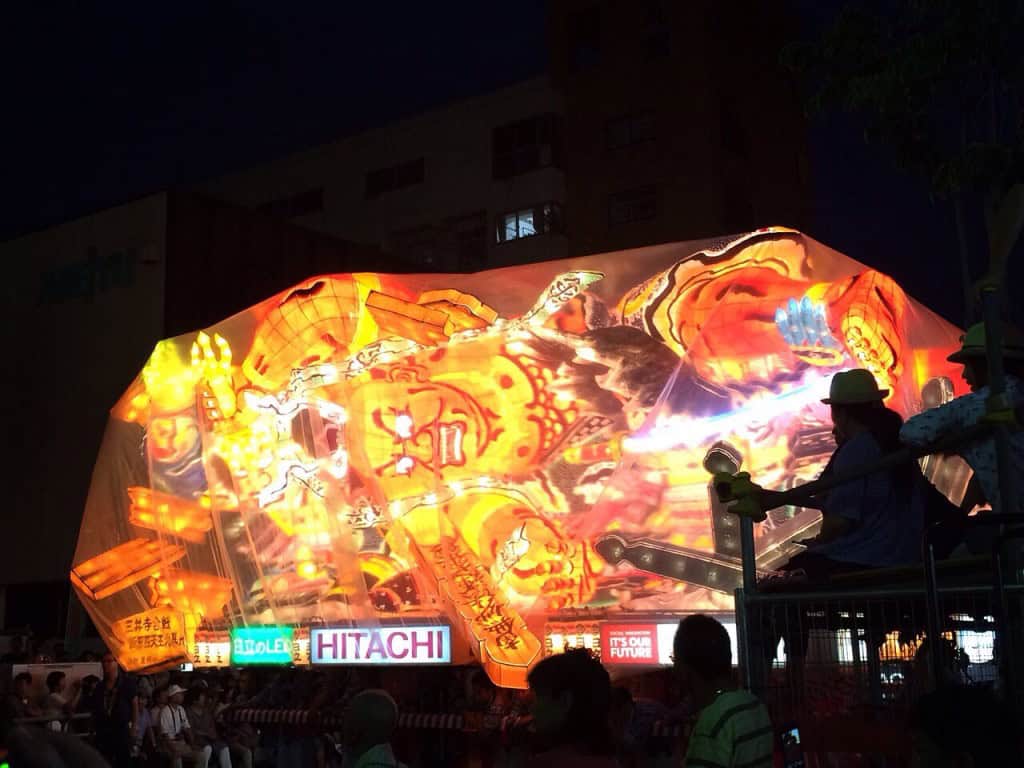
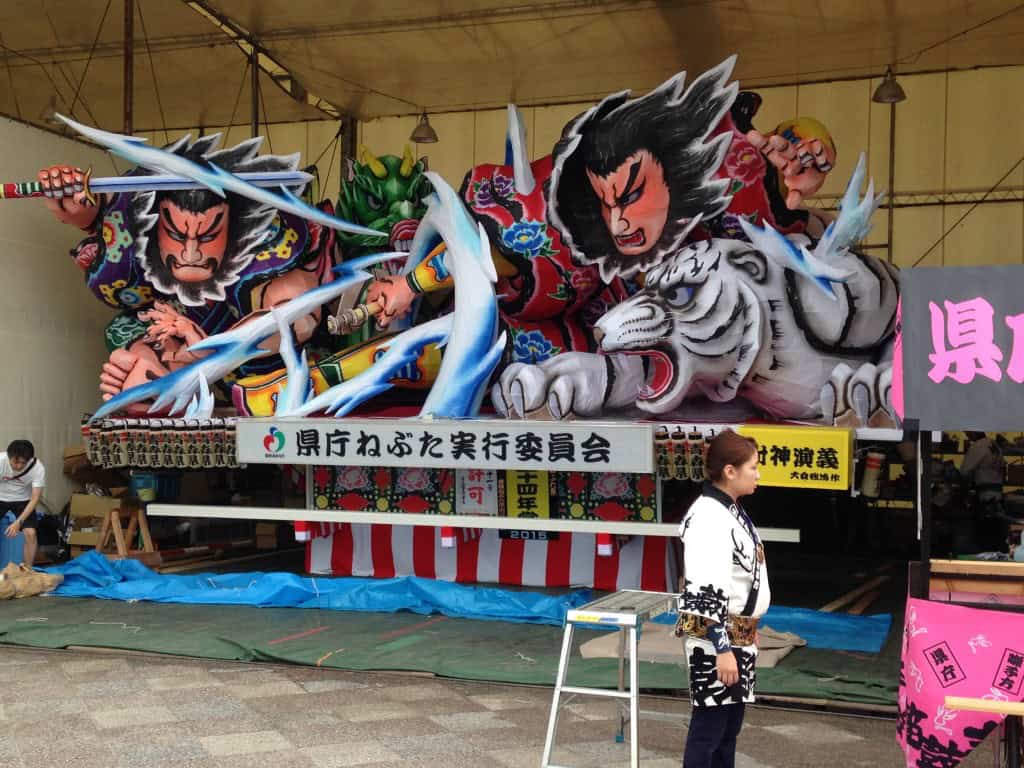
Before the parade, I recommend visiting Nebuta Koya, which is the large shed where the floats are kept during the off-season. It is located next to the ASPM Building near the city’s waterfront. Here, you can see the floats up close. Even though they might not be as impressive when they are not lit up, you can still appreciate the immense amount of work that goes into creating these gigantic works of art throughout the year.
Originally posted March 29, 2016, updated August 12, 2024.



